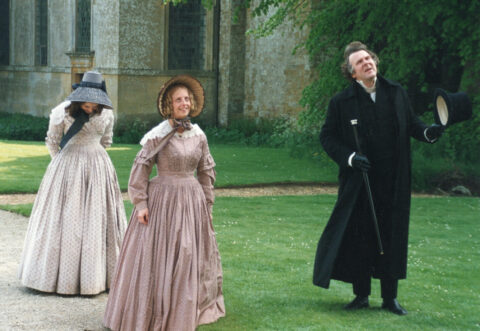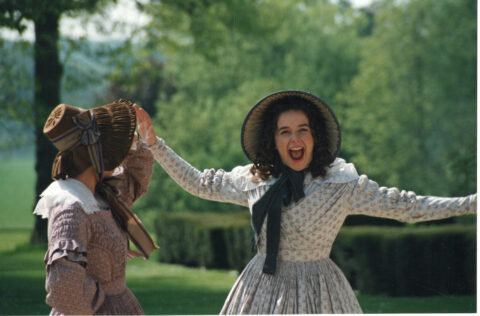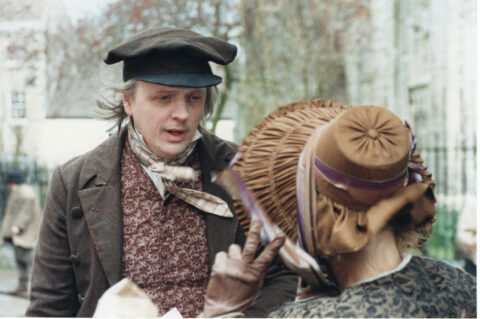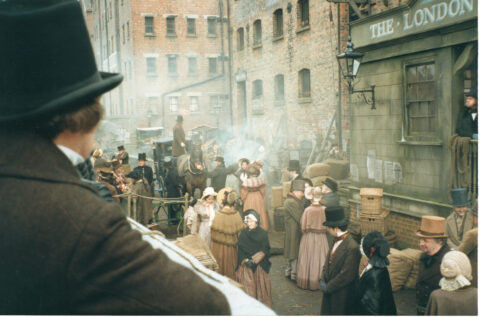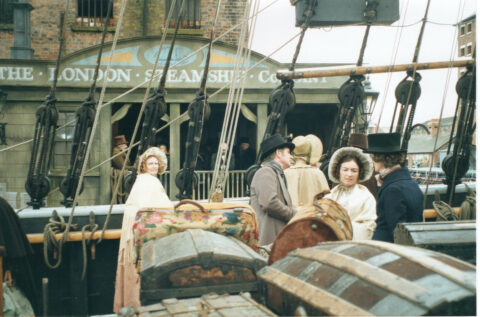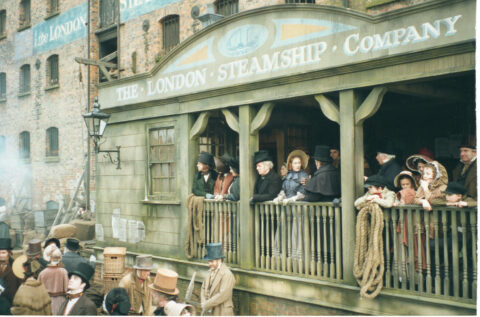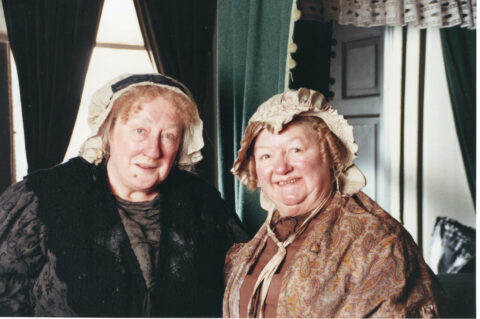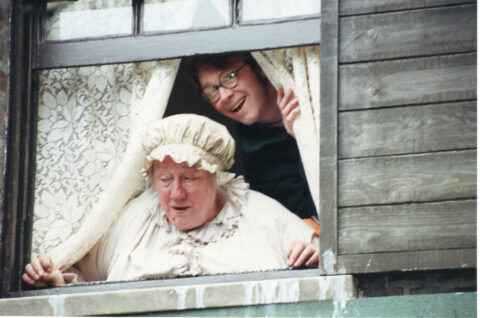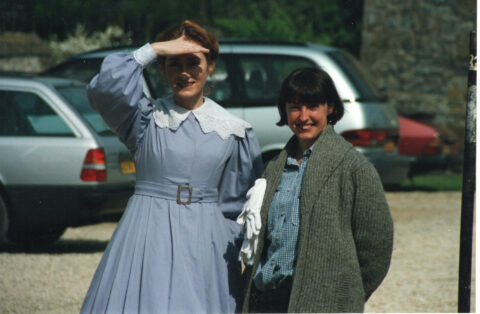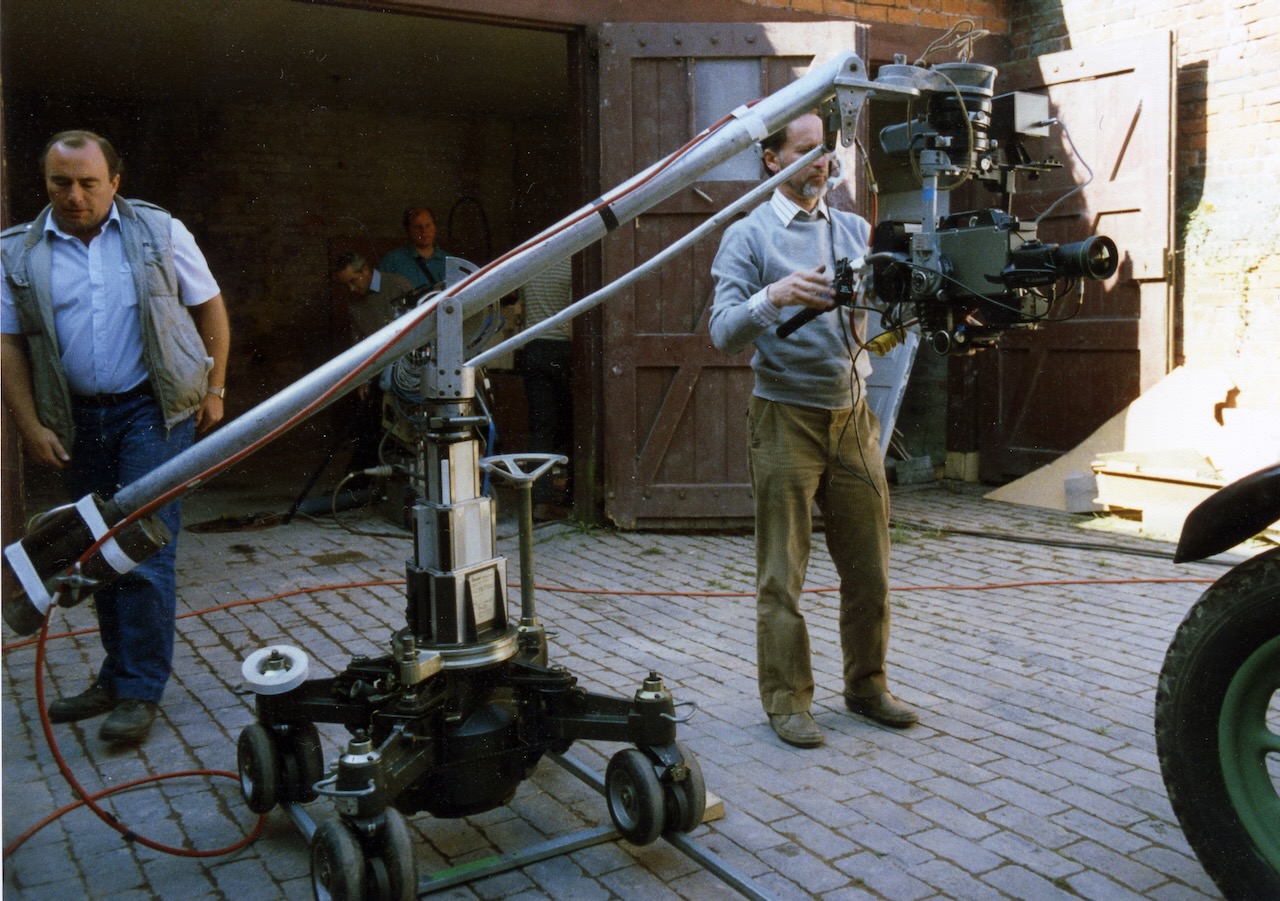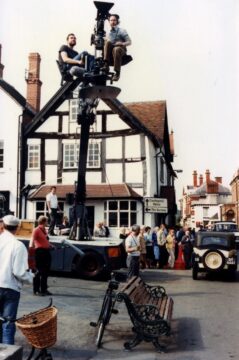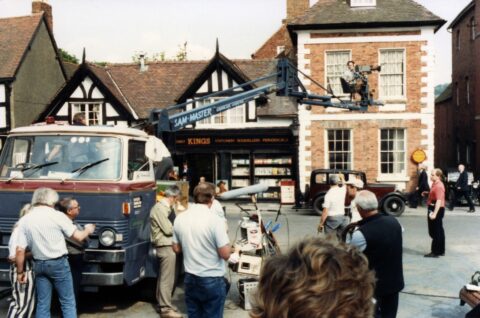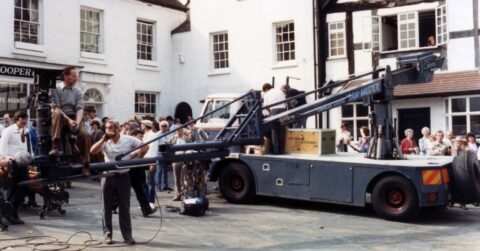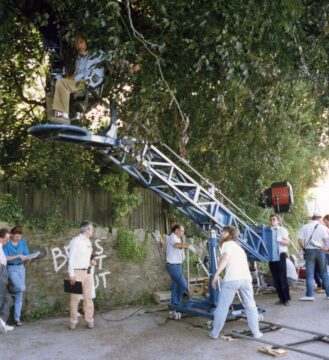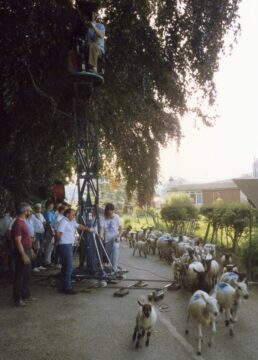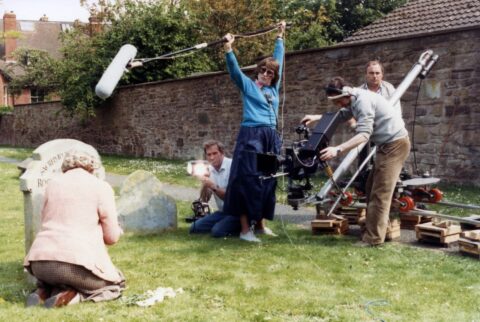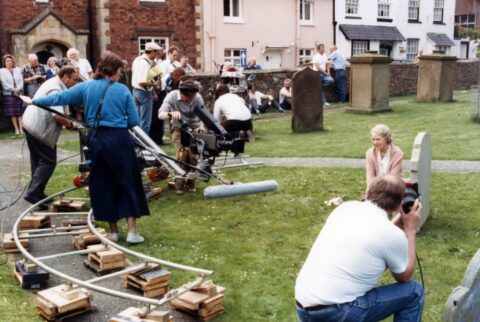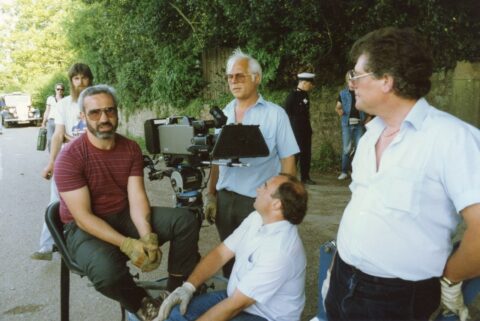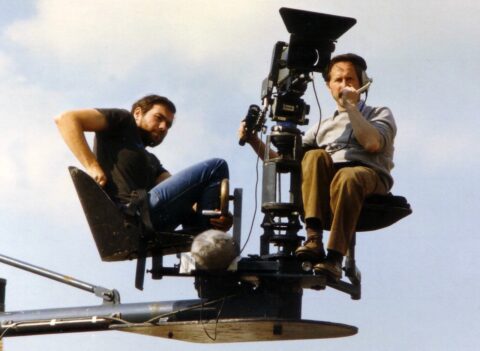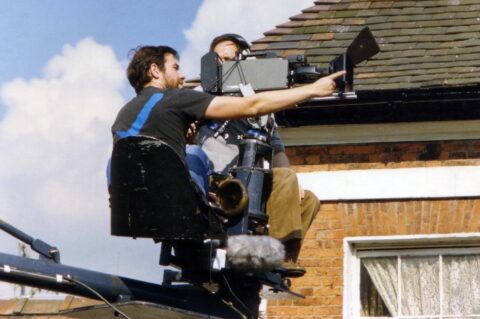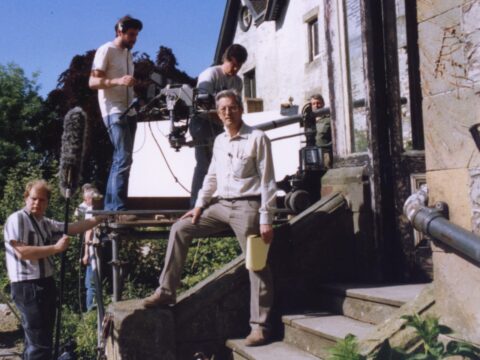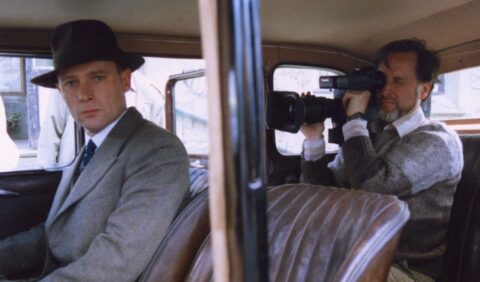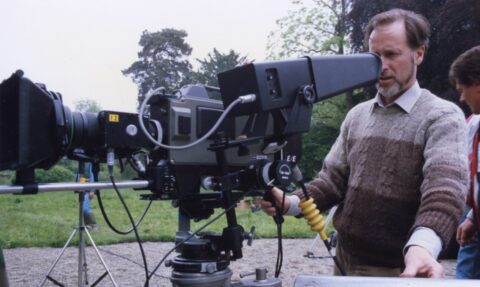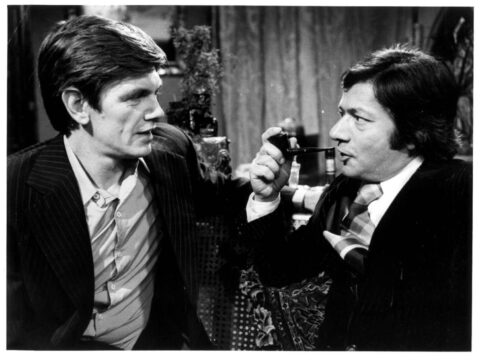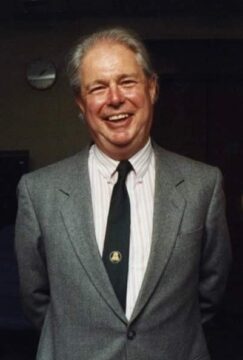‘The Groundling and the Kite’ was a drama in the Play for Today anthology.
Crew photograph from 1983
This was the last Play For Today made out of Pebble Mill. Shot during the very hot summer of 1983 in and around Hampstead in London and transmitted on BBC1 in 24 July 1984. This was the last show I worked on as a Production Assistant before becoming a Production Associate. I have discovered the full play is available on You Tube should you wish to watch: https://www.youtube.com/watch?v=4clkwmzOHlE
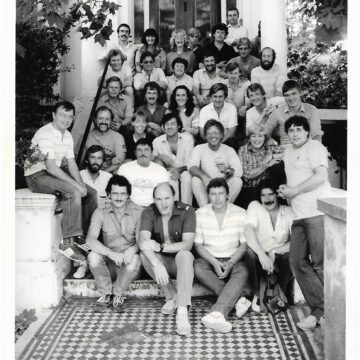
The Groundling and the Kite crew. Thanks to Jenny Brewer for sharing the photo.
From front row R to L Keith Froggatt, Cameras; Charles Bond, Designer; Alan Miller (with the bald head) Gaffer Spark from Lee Electric with 3 sparks alongside him
Next row Colin Rogers, Producer; Graham ??; Prop and Support Vehicles
Next row Ian MacNulty; Grip; Jenny Brewer, Production Assistant; John Duttine, Actor; Peter Jefferies, Director; Carol Parks, Production Associate
Next Row William Hartley, Production Manager; Lenny Preston, Writer and Actor; John Kenway, DOP; Liddy Bennett, Assistant Floor Manager; Geoff Nawn, Design; John Parker, Sound Recordist
Next Row John Cole, Sound; Chap from Costume ?; Gwen Arthy, Make Up Designer; Trevor Elwell, Scene Crew Supervisor; alongside Nigel ?? and others on the scene crew; Tom Beech, Props Buyer; Nigel Roberts next to Tom Beech, Ray Clulow, carpenter, behind Nigel & one of the painters behind Ray. Hiding behind the pillar might be Phil Hawkins, scene crew supervisor.
Back Row Mark Thompson Unit Driver; Lesley Weaver, Make Up; Sue Peck, Costume Designer; and ?? from Costume
